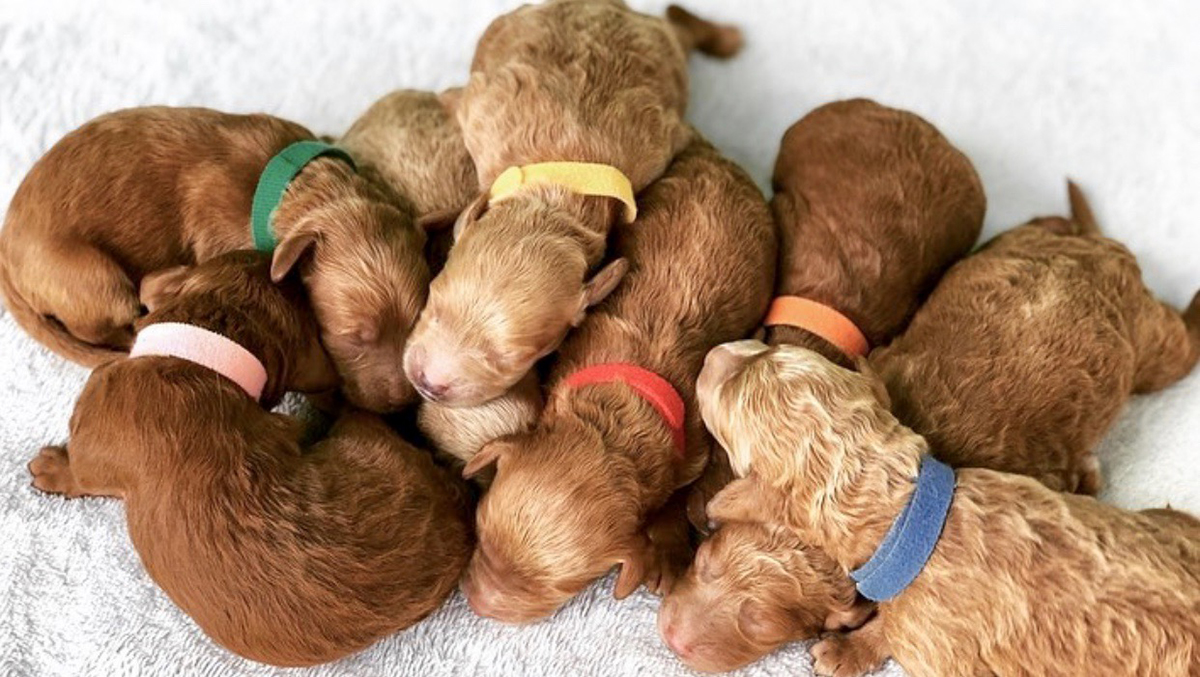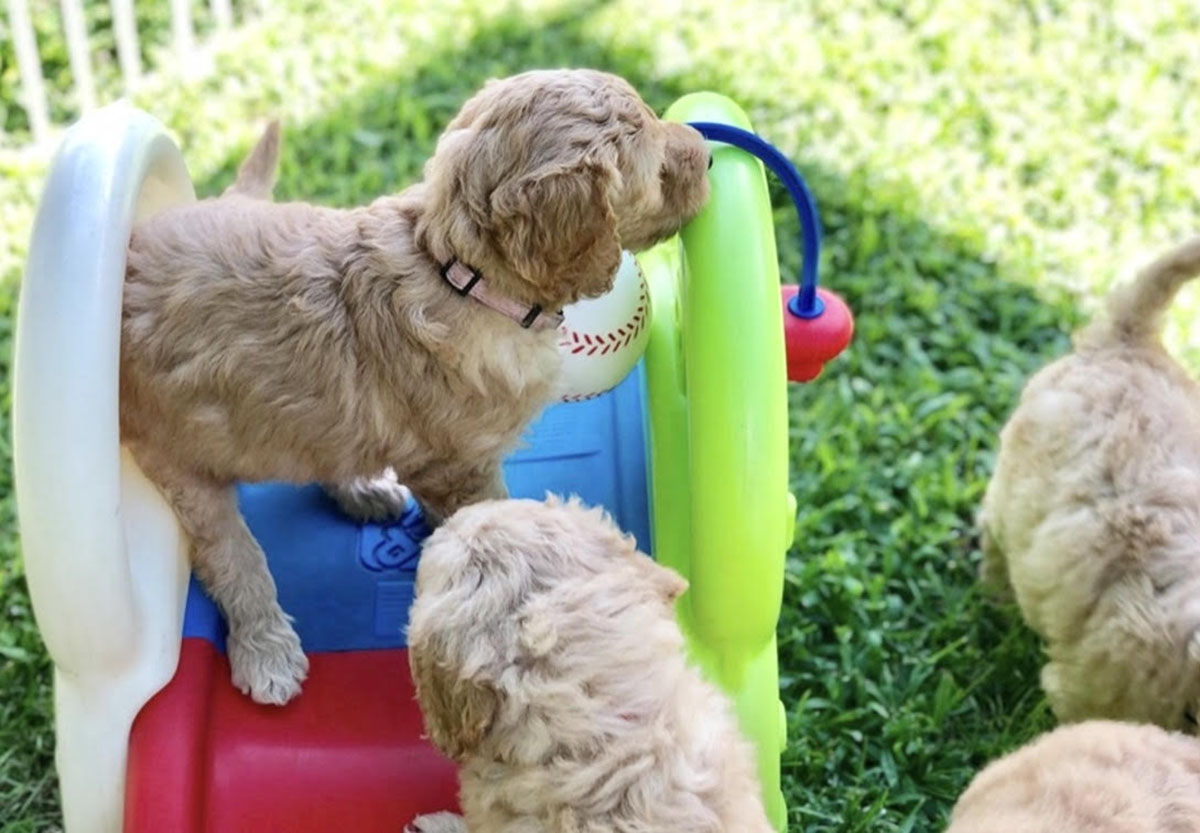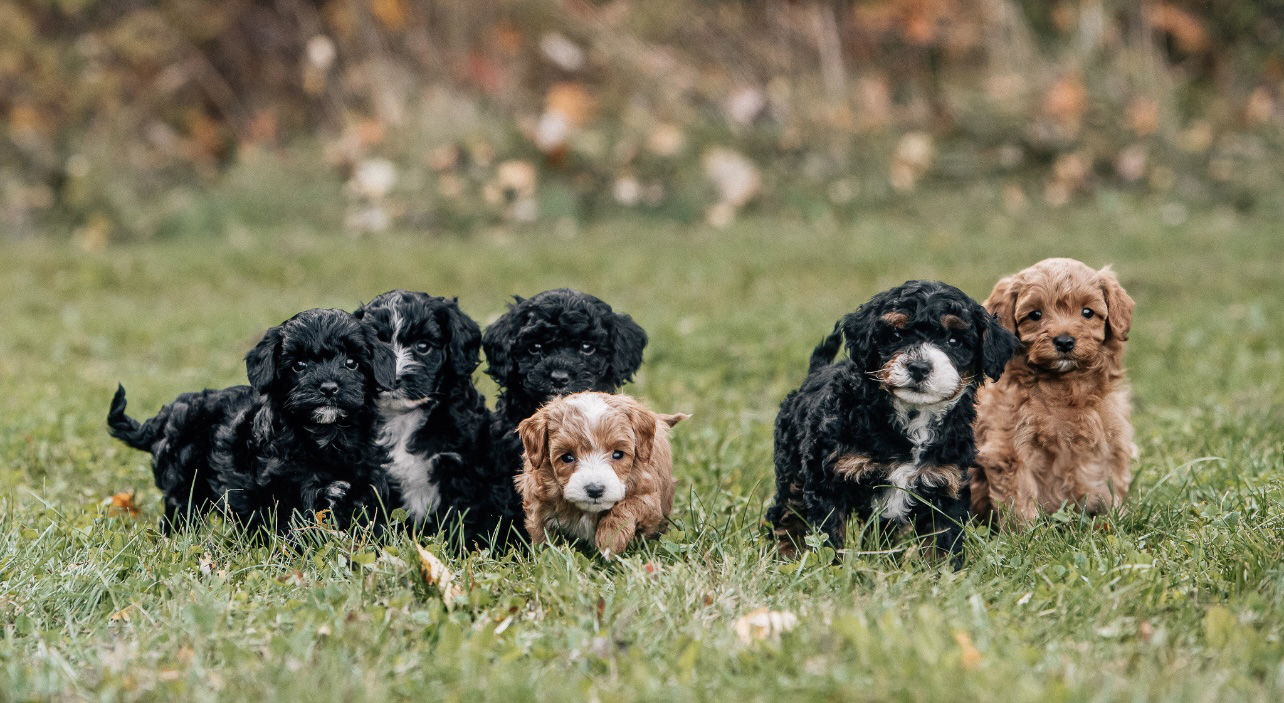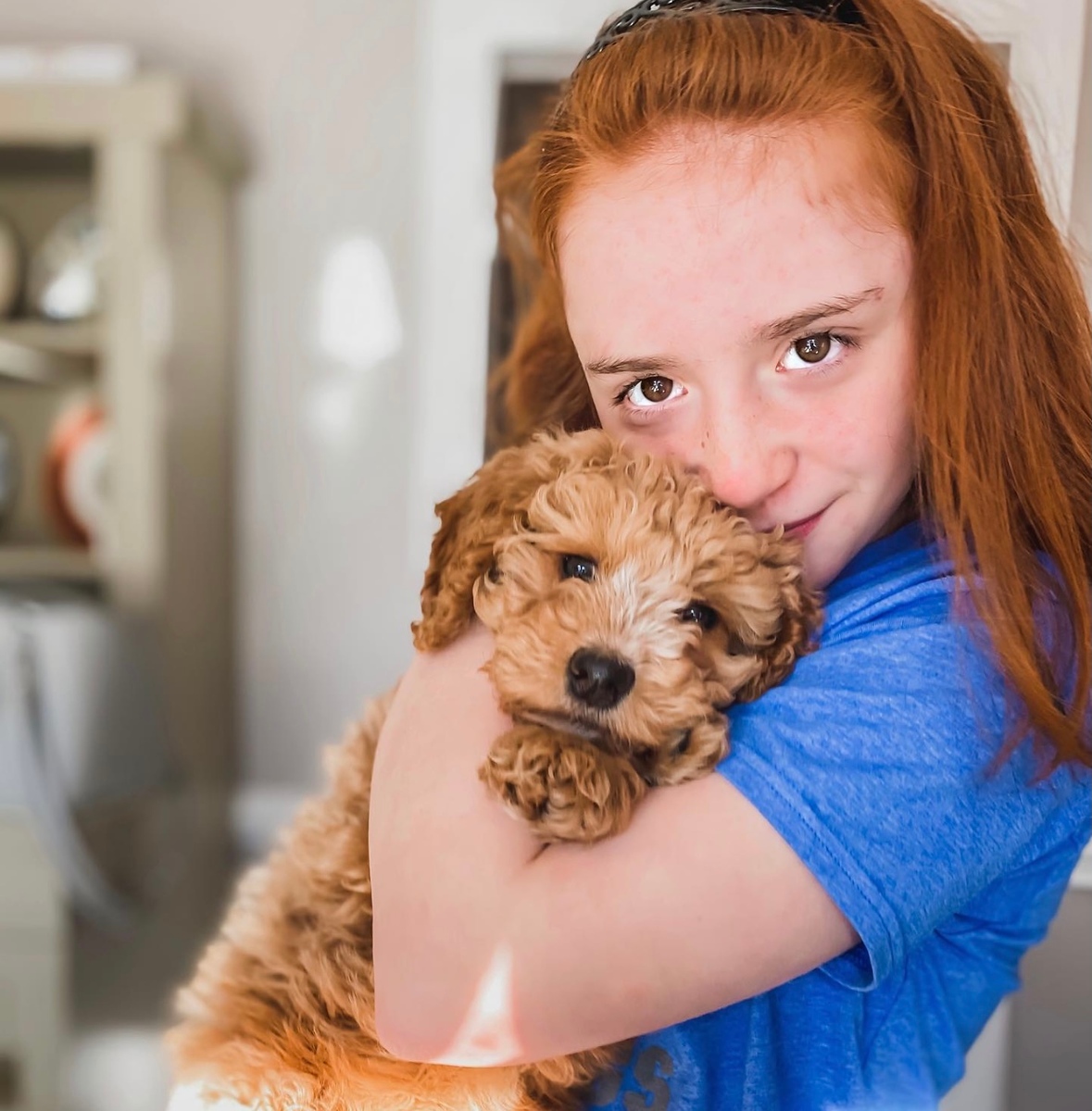Quick Answer: Early Neurological Stimulation (ENS) is a proven protocol performed on puppies from days 3-16 of life using five gentle exercises that last just 3-5 seconds each. This brief daily stimulation optimizes nervous system development, resulting in dogs with better stress tolerance, stronger immune systems, and more confident temperaments throughout their lives.
Key Takeaways
- ✓ ENS is a proven protocol used during days 3-16 of a puppy’s life to optimize nervous system development
- ✓ The window is brief and critical – this neurological stimulation only works during the first 2-3 weeks when puppies are most responsive
- ✓ Benefits last a lifetime – ENS puppies show better stress tolerance, stronger immune systems, and more confident temperaments throughout their lives
- ✓ It’s one piece of the puzzle – ENS works best alongside good genetics, proper socialization, and comprehensive health care
Table of Contents
- Understanding Your Puppy’s First Days: Why ENS Timing Matters
- The Science Behind Good Stress for Puppies
- Why Timing Matters: The 13-Day Window
- The ENS Protocol: What We Do With Your Puppy (Days 3-16)
- ENS Benefits: What This Means for Your Goldendoodle, Cavapoo, or Cavadoodle
- How ENS Prepares Puppies for Socialization Success
- Our Commitment to Your Puppy
- Frequently Asked Questions About ENS for Doodle Puppies
When your puppy is just three days old—tiny, eyes still closed, barely able to wiggle—we start something pretty special. It might sound early, but these first couple of weeks are like a magic window that only opens once in your puppy’s life.
We’re talking about Early Neurological Stimulation, or ENS. Whether you’re bringing home a Goldendoodle, Cavapoo, or Cavadoodle from our Ohio program, every puppy receives this critical ENS training. Think of it as a gentle workout program for your puppy’s developing nervous system. As Ohio breeders, we’ve seen firsthand how ENS helps our doodles adapt confidently to everything from busy family households to the unpredictable Midwest weather.

When Should ENS Start? Understanding Your Puppy’s First Days
Here’s something most puppy parents don’t realize: when puppies are born, they’re completely helpless. They can’t see or hear. They can’t keep themselves warm or even go to the bathroom on their own. All they can do is wiggle a few inches toward mom.
This vulnerable stage lasts until they’re about 2-3 weeks old. And here’s why that matters for ENS: during this time, their nervous systems are like wet clay—incredibly moldable and responsive to gentle stimulation. It’s a brief window when small, positive stresses can shape how their brain develops for life.
After about 2-3 weeks, that window closes. Their nervous systems become less responsive to this type of early stimulation. That’s why we start ENS at exactly 3 days old—to take advantage of this critical developmental period when it can make the biggest difference.
Why Does Stress Help Puppies? The Science Behind ENS
You’ve probably heard of “bad stress”—the kind that makes your shoulders tight and keeps you up at night. But there’s also something called “good stress.”
Think about going to the gym. Lifting weights is technically stressful on your muscles, right? But that stress is what makes them stronger. Your body adapts and grows from it.
That’s exactly what ENS does for puppies. We give their nervous systems tiny, controlled challenges—just enough to stimulate growth, never enough to overwhelm them.
The result? Puppies who grow into dogs that are:
- More confident in new situations
- Better at handling everyday stress (like vet visits or thunderstorms)
- Less likely to be fearful or anxious
- More focused and responsive

Why Timing Matters: The 13-Day Window
Here’s where it gets really interesting. Your puppy’s genetics—the blueprint they’re born with—don’t change. We carefully select breeding pairs with the best possible genetics, and that matters tremendously.
But there’s another layer called epigenetics. Think of it this way:
Genetics = The recipes in a cookbook (fixed, can’t be changed)
Epigenetics = How and when you actually use those recipes (totally changeable)
Or imagine genetics as sheet music. The notes on the page don’t change, but how a musician plays that music can be completely different each time.
ENS works with your puppy’s epigenetics during a tiny window—roughly days 3 through 16 of their life—to help their nervous system develop as optimally as possible. According to research from Purdue University’s College of Veterinary Medicine, this specific timeframe represents a period of rapid neurological growth and development. Miss this window, and it closes forever.
What Does the ENS Protocol Look Like? (Days 3-16)
Before They’re Even Born
We start by gently rubbing mom’s belly during late pregnancy. Puppies can actually sense touch in the womb, and research shows this creates calmer, more docile puppies.
Days 3-16: The ENS Protocol
Starting at three days old, each puppy gets five gentle exercises once per day:
- Toe tickling – We gently tickle between their tiny toes
- Head up – Hold them upright with head above their tail
- Head down – Hold them with head pointing down toward the floor
- On their back – Cradle them on their back in our palms
- Cold touch – Place them briefly on a cool, damp washcloth
Each position lasts just 3-5 seconds. We’re not trying to stress them out—we’re giving their brain just enough new sensation to spark development without overwhelming them.
You might wonder: won’t this upset them? Here’s the thing—we’re looking for that sweet spot. A tiny bit of mild discomfort that says “hey, something’s different!” but never crosses into actual distress. It’s the same as when you pick up slightly heavier weights at the gym—it should challenge you, not injure you.

ENS Benefits: What This Means for Your Goldendoodle, Cavapoo, or Cavadoodle
When you bring your puppy home, you’re getting more than good genetics. You’re getting a puppy whose nervous system has been primed to handle life’s challenges.
The science backs this up. According to the American Kennel Club’s research on ENS, puppies who receive this early stimulation have been shown to have:
- Better stress tolerance throughout their lives
- Stronger immune systems and disease resistance
- More responsive cardiovascular and adrenal systems
- Improved problem-solving abilities
But what does that actually look like in your home?
It means a dog who’s more likely to:
- Stay calm during car rides to the vet
- Adapt quickly when you have guests over
- Recover faster when something startles them
- Be confident exploring new places with you
- Form secure, trusting relationships
- Handle Ohio’s varying seasons and weather changes with ease
How Does ENS Prepare Puppies for Socialization?
ENS is just the beginning. After this early neurological work, puppies move into their critical socialization period—when they learn to interact with people, other dogs, and the world around them.
Think of ENS as building a strong foundation. You can’t build a great house on a weak foundation, and you can’t socialize a puppy effectively if their nervous system isn’t ready for it. ENS prepares them to actually benefit from all the wonderful experiences they’ll have during socialization.

Our Commitment to Your Puppy
We’re passionate about this work because we’ve seen the difference it makes. We use methods proven by research and decades of breeding science—not because they’re complicated, but because they work. Our ENS protocol is based on the work pioneered by Dr. Carmen Battaglia, a respected authority on canine development and breeding practices.
Every puppy deserves the best possible start. Those tiny, helpless three-day-old puppies in our whelping box? They’re already beginning their journey to becoming your confident, happy, well-adjusted companion.
That’s why we do what we do, and why we’re committed to giving every single puppy this advantage.
Frequently Asked Questions About ENS for Doodle Puppies
Do all breeders use Early Neurological Stimulation?
It’s breeder-dependent. Some breeders incorporate ENS into their programs, while others use different early development approaches. Each breeding program differs, so it’s always worth asking your breeder directly about their specific practices and protocols for the first few weeks of a puppy’s life.
Can I do ENS at home if I have a litter?
While ENS exercises are simple, proper timing and technique are crucial. The protocol must be done from days 3-16 exactly, with each exercise lasting only 3-5 seconds, once per day. Over-stimulation can be harmful. If you’re breeding, we recommend thoroughly researching the protocol and consulting with experienced breeders or veterinarians before attempting ENS.
What’s the difference between ENS puppies and non-ENS puppies?
Research shows that ENS puppies typically demonstrate better stress tolerance, stronger immune systems, and more confident temperaments throughout their lives. That said, ENS is just one piece of the puzzle. Genetics, socialization, health care, nutrition, and the home environment all play crucial roles in a puppy’s development. At our program, ENS is one of many tools we use to raise healthy, well-adjusted puppies—alongside careful genetic selection, proper socialization, comprehensive health testing, and more.
Will ENS make my Cavapoo or Cavadoodle puppy calmer?
ENS doesn’t create “calm” puppies—it creates well-adjusted ones. Your puppy will still have normal puppy energy and personality, but they’ll be better equipped to handle new situations, recover from stress faster, and adapt to changes in their environment.
When does ENS training start and end?
We begin ENS when puppies are exactly 3 days old and continue through day 16. This specific window is critical because it’s when the neurological system is most responsive to this type of stimulation. The window closes after this period.
Is Early Neurological Stimulation safe for mini Goldendoodle puppies?
Yes, completely safe when done correctly. Each exercise lasts only 3-5 seconds and provides mild, beneficial stress—not distress. We’ve been using this protocol for years with excellent results for our doodles.
Does ENS replace socialization?
No, ENS and socialization work together. ENS prepares the nervous system during weeks 1-2 of life, creating a strong foundation. Socialization happens later (weeks 3-12+) and builds on that foundation. Both are essential for raising well-adjusted dogs.
Will my Goldendoodle puppy be less anxious because of ENS?
ENS significantly improves stress resilience, which can reduce anxiety-related behaviors. However, ongoing socialization, training, and a stable home environment are equally important for preventing anxiety issues.
What happens if a breeder skips ENS?
The puppy can still be healthy and happy, but they miss out on optimized neurological development during that one-time critical window. Think of it like missing an opportunity to build the strongest possible foundation—you can still build on what’s there, but you can’t go back and create that foundation later.
How long does ENS take each day?
ENS takes only about 30-45 seconds per puppy per day. With five exercises lasting 3-5 seconds each, the entire protocol is quick but impactful. For a litter of 8 puppies, you’re looking at about 5-6 minutes total daily.
Does ENS hurt the puppies?
No, ENS does not hurt puppies. The exercises provide mild, beneficial stress—similar to a gentle workout. Puppies may seem surprised or slightly uncomfortable for those few seconds, but this brief stimulation is what creates the positive neurological benefits. If a puppy shows signs of distress, the exercise should be stopped immediately.
Is ENS worth it for family pets, or just for working dogs?
ENS benefits ALL dogs, whether they’re family companions, therapy dogs, or working dogs. Every dog faces stressors in daily life—vet visits, car rides, meeting new people, thunderstorms. ENS helps them handle these everyday challenges better.
Ready to bring home an ENS-raised puppy? Contact us to learn more about our available Goldendoodle, Cavapoo, and Cavadoodle puppies raised with ENS in Ohio!
Related Articles
Finding the Best Breeder
Learn what questions to ask and what to look for when choosing a responsible doodle breeder. Discover the key practices that separate quality breeders from the rest.
Temperament Testing in Puppies
Find out how we evaluate each puppy’s unique personality to help match you with the perfect companion for your family and lifestyle.
Adopting Your Puppy the Right Way
Get expert guidance on preparing for your new puppy, from supplies you’ll need to making the transition smooth for both you and your doodle.



